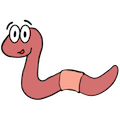[Note- Here are the notes I took that day, edited for clarity]
Notes – Day 1 Session 2
“I have a hypothesis!” Strategies for creating intentional teaching and learning opportunities using STEM
Teaching & Instructional Practices
3-hour Wednesday session — limit 8 presenters
Preschoolers
11/2/2016 12:30 PM – 3:30 PM Gold Ballroom 1
JW Marriott
Kori Bardige, Early Childhood Special Education Consultant, Learning Circle Consulting; Melissa Russell, Preschool Director, The Hundred Acre School at Heritage Museums & Gardens
Join us on a STEM Exploration as we transform ordinary environments into learning laboratories that nurture curiosity and encourage children to develop inquiry skills, create and test hypotheses and learn STEM (Science, Technology, Engineering, and Math) through play. We will use interactive games, experiments, and group discussion to extend our knowledge of STEM and explore ways to help teachers and children enhance their knowledge and strengthen connections in all learning domains. We will share research that describes the benefits of STEM for helping children develop skills in all domains especially language and literacy. We will use STEM lab activities to help us practice methods for encouraging children to use the Scientific Method. Participants will leave with strategies they can use to transform their environments, suggestions of activities that encourage children’s hypotheses and opportunities to teach through play. Administrators will have strategies for professional development opportunities that encourage the use of STEM for intentional teaching. The presenters will share techniques for encouraging children to be curious, to wonder, think, play, question, and connect with the world around them. We will describe our teaching philosophy based on the Scientific Method and how we used this to help us transform the environment into a place where children spend their time investigating their own hypotheses and teachers support their experiments with scientific knowledge.
(new vocab – subtilizing – able to quickly look at number and know how many are there~ dice)
graphing
Introduce sophisticated language & provides new context
STEM – promotes curiosity and wonder
Hands – on manipulative
How to encourage inquiry learning in teachers & students
Ask excellent questions
Headbanz exercise – guess in 5 questions only
What type of questions did you ask? (Y/N?)
They don’t help to figure out the answer, because there isn’t much feedback
Ask genuine questions
What do you want to know? [[photos]]
Ask reflective questions
- makes conversation more meaningful
- more descriptive language
- more fun for both
- give children time to think
- really listen and respond to their ideas
- infants – you can be narrating what they are doing to give them the language
Toddlers with their action and begin to put discoveries into words
preschool – enthralled in experimenting
STEM interests and curiosities to extend children’s ideas
when they see you excited, they get excited
allow for the extended time
take guesses about what they know
not via book or google
tap into family expertise
example Symmetry
water tables with tubes
sticks on cloth
[model of block structures]
KODO sets
-half tube
could use curved moulding
Beebot (program a bee to move across an alphabet mat)
tub with recyclables in it
cornstarch — ooblek
ramps – ball with small bump and small flat on one side (moves unpredictably)
Experiments that take place ‘once’
Classic example = volcano – how does it apply? — it is actually chemical reactions, and a volcano doesn’t have something poured in it
Put stuff out and observe, but not all the time
A) place out objects
B) ask a directed question
wanderers – sometimes kids need questions to get drawn
they don’t know how to approach a loose part
drawing – details of the wing of a butterfly
Items to take apart
keyboard (my old IKEA clock)
Questions to explore and expand on
Talk about an item
introduce an item and its properties
then let the kids form a hypothesis … etc (filling out the scientific method)
Fill out the children’s learning
[When observing with a direction you get double the knowledge [what you think will happen, what does happen and what the other person thinks will happen]]
If there’s a mission, then they are less likely to try dangerous behaviors [using items improperly]
more collaboration – to achieve same goal — naturally happens
sometimes a modifying question can help move along (instead of a standstill)
‘Very Hungry Caterpillar’
Discussion of fiction vs nonfiction
“Where did the author use imagination?”
centers are all related to concept
-trees – dramatic play
-research – books on trees, journaling
usb microscope on leaves and bark
kids can help decide location of materials
hypothesis – what they want to explore
think
come back
STEM gives a concrete example of conversations
-research
